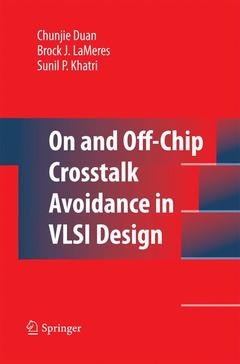Description
On and Off-Chip Crosstalk Avoidance in VLSI Design, 2010
Authors: Duan Chunjie, LaMeres Brock J.
Language: English
Subject for On and Off-Chip Crosstalk Avoidance in VLSI Design:
116.04 €
In Print (Delivery period: 15 days).
Add to cartPublication date: 11-2014
240 p. · 15.5x23.5 cm · Paperback
Approximative price 158.24 €
In Print (Delivery period: 15 days).
Add to cartPublication date: 01-2010
240 p. · 15.5x23.5 cm · Hardback
Description
/li>Contents
/li>Comment
/li>
Deep Sub-Micron (DSM) processes present many changes to Very Large Scale Integration (VLSI) circuit designers. One of the greatest challenges is crosstalk, which becomes significant with shrinking feature sizes of VLSI fabrication processes. The presence of crosstalk greatly limits the speed and increases the power consumption of the IC design.
This book focuses on crosstalk avoidance with bus encoding, one of the techniques that selectively mitigates the impact of crosstalk and improves the speed and power consumption of the bus interconnect. This technique encodes data before transmission over the bus to avoid certain undesirable crosstalk conditions and thereby improve the bus speed and/or energy consumption.

